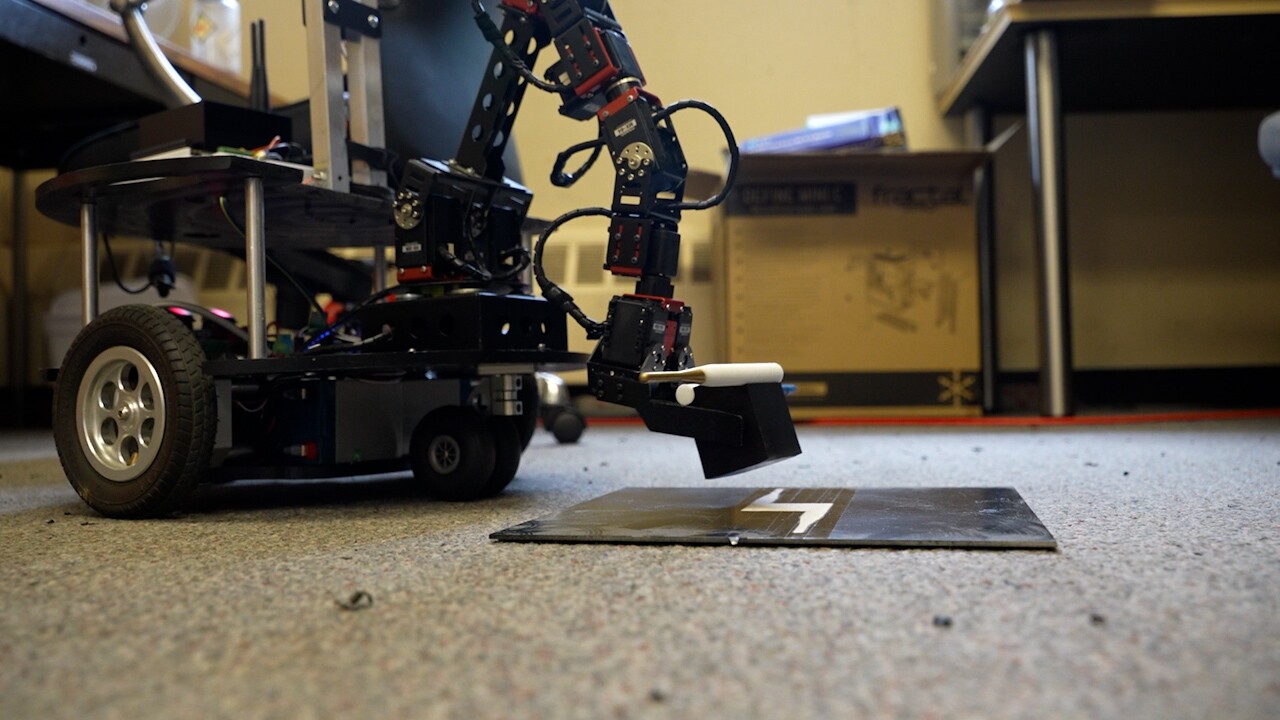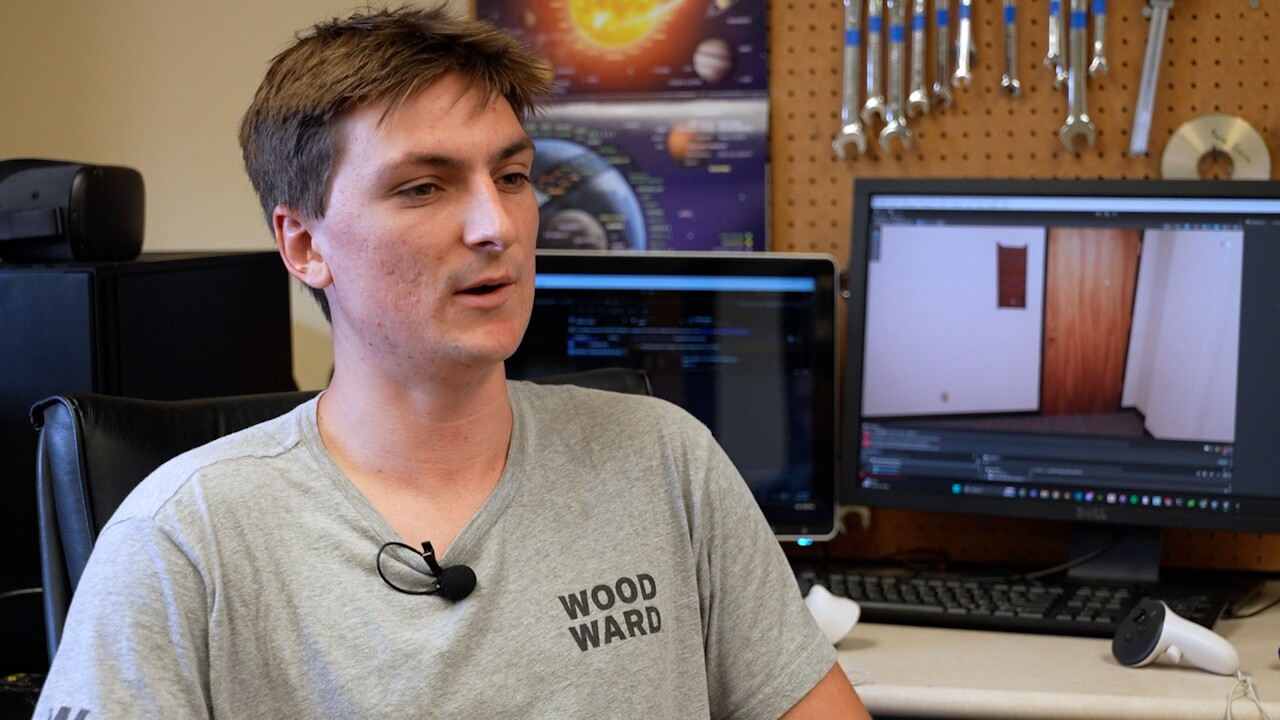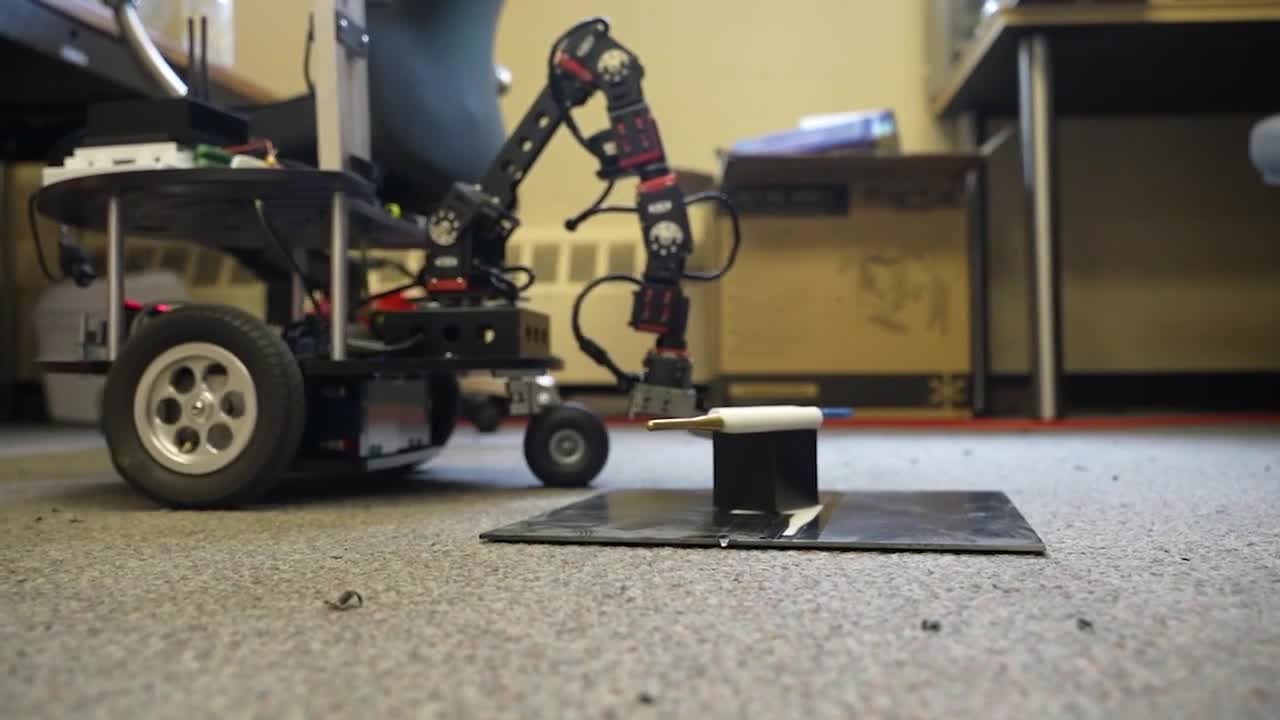BOULDER, Colo. — In a building underneath the stands at Folsom Field, some University of Colorado Boulder students in the Department of Astrophysical and Planetary Sciences are laying the foundation for the future of lunar exploration.
Xavier O’Keefe, who graduated from CU this spring and is now a graduate student, is part of the team behind a NASA-funded experiment involving a one-armed, three-wheeled robot fittingly named ‘Armstrong,’ a nod to the first person to walk on the moon, Neil Armstrong.
Operating the robot with an XBOX controller, O’Keefe moved it around a small room for Denver7 to see, picking up a piece of ‘antenna’ to re-create the experiment.
“There's a mission called the Far Side mission, which aims to put 100,000 antennas on the far side of the moon to create a giant radio telescope,” O’Keefe explained. “So the idea here was that the antennas sometimes would get misaligned on the moon in this future mission, and that rovers would be the best way to correct that.”

Lunar rovers include both autonomous and human-controlled, “tele-operated” rovers for more complicated tasks, which are the subject of this experiment.
In it, some operators only moved the real-life robot to pick up and re-align the antennas. But others first got some practice with a virtual robot—known as a “digital twin”— in a virtual reality replica of the experiment room, which O’Keefe’s team created.
“A digital twin is designed to be exactly like the physical rover in every way, but it doesn't require that you risk the hardware or, you know, maybe pay for expensive testing setups,” said O’Keefe. “The goal is that you're able to do whatever you want with digital twin and have it transferred directly, one to one, to the physical rover.”
The experiment led to a study, which found the digital twin practice made operators faster when moving the real robot, with an 85% drop in “unrecoverable errors.”
“We saw that they were a lot less stressed out when they were completing the physical task after training with the virtual one, and also that they felt less pressure,” said O’Keefe. “They just felt generally more comfortable. And I was surprised to see that that was actually a significant effect.”
Training in VR also avoids prematurely putting robots on the moon’s treacherous terrain. It could be a solution for future moon missions.
Paul Hayne, a CU associate professor of Astrophysical and Planetary Sciences and an active member of “several” NASA missions, told Denver7 controllable robotic assets on the moon’s surface “could be very powerful, a very effective way of getting things done when you don't have an astronaut in a particular place.”
“You can deploy robots into places that are hazardous for humans,” he told Denver7. “Every minute that an astronaut is on the surface of the Moon costs money and resources. And so the more that you can do with robots in between those human missions, the more effective the overall program can be.”

After years of focusing on missions to the International Space Station, NASA plans to ramp up its moon missions in the coming years, Hayne said. It has already been increasingly partnering with private companies, and universities like CU, over the last decade.
“NASA is trying to build up the infrastructure and the knowledge to be able to have a long-term presence on the moon with astronauts,” Hayne said. “So how do you build a moon base that would be sustainable for years or decades into the future… We're looking at, you know, six to seven years from now, we may have astronauts on the surface. Now, landing and coming back is one thing. Building infrastructure for a long-term, human base is something else entirely.”
Hayne said he’s proud to be continuing CU’s space program legacy.
“For young people out there who are interested in getting involved in space, it's as good a time as ever to pursue those dreams,” he added.
Over the last few years, O’Keefe has been able to live out his dreams.
“Running the experiment was really cool, and then being able to write up the results, get meaningful results, and then publish them into a paper, into a journal, was really, really awesome,” he said.
O’Keefe said the team is currently building on its experiment by creating a virtual simulation for a moon robot, working with Golden-based company Lunar Outpost to prepare for a future mission.





Denver7 is committed to making a difference in our community by standing up for what's right, listening, lending a helping hand and following through on promises. See that work in action, in the videos above.




